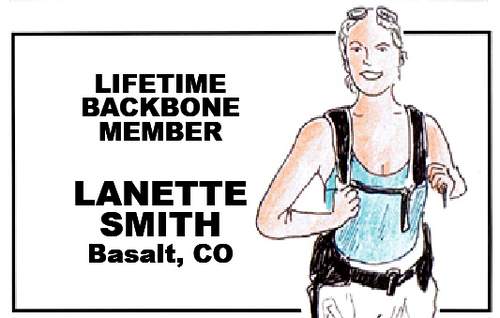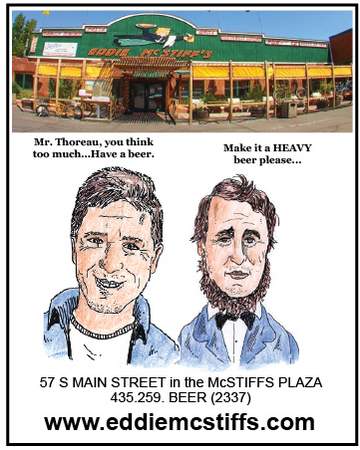Paul Vlachos is a New Yorker who understands The West. And he is a New Yorker who understands New York. Wherever Paul goes, he finds signs of life…
1. Indio, California – 1998
Indio keeps getting bigger and bigger. At least, that’s my impression of it whenever I pass through. I don’t remember actually snapping this photo. I often do remember such things, even though my memory in other areas is atrocious. I don’t remember taking this shot, though. I can safely say that I used a tripod, as it was shot on slow film at night and I remember using a tripod a lot in those days. My usual modus operandi then – and now – was to slowly roll through a town and case the strip before I got a room. If it was a good strip with good signs, I’d pop out every few hundred yards with my tripod and shoot. So, I imagine that’s how I ended up with this shot. I do not recall staying in Indio, but this photo looks pretty dark and I generally don’t like to drive late at night, so I may have slept here. Not that these details are crucial. More interesting to me is the name – did someone have a thing for Hawaii? I would think so. And the well-preserved sign. It probably has not been altered for 50 years. And, as always, the word “Kitchenettes” makes me happy.
2. Las Vegas, Nevada – 1998
The El Cortez is another great old sign. Another sign that could have been untouched since the 40’s. This was on the seedier side of Vegas, which was once the main drag. This part of town is now the showcase for a strip of run-down motels, drug and sex rooms, dens of iniquity, where people spend their days leaning on the outdoor balconies and stairways and checking you out with blank stares. I don’t like to linger long here. Lots of bad mojo and broken dreams. I do believe in redemption, but it takes a little more imagination to conjure it up when you’re in this part of town. “Coffee Shop and Bar. Free Parking.” Of course, we know that nothing in Vegas is really free.
3. Las Vegas – 1999
The front of the Atomic Bar had a great sign and facade. This is not the front. It’s the side view. Not as picturesque, but still pretty evocative for me. It must have been named in the 50’s, when the government was conducting above-ground nuclear tests north and west of Vegas, at the Nevada Test Site, and people would gather on the roofs of the casinos to watch the blasts and the mushroom clouds. Of course, the flip side of this is the tragedy for the down-winders, especially those in Saint George, Utah, who are suffering to this day from the fallout – and “fallout” is not a metaphor here. The story of the high cancer rates, the government deception and the inexorable military-industrial complex are beyond the scope of these slightly happy, mostly depressing captions. Let it be noted, though, that the Atomic Bar was probably named before the truth came out. It’s not far from the El Cortez, pictured above.
4. Monument Valley, Utah – 1998
Anybody who has seen a Hollywood western or two has seen Monument Valley, where so many great films were shot. It’s on the Navajo reservation and, unless you have a private guide, you have to pay your fee and stick to the loop road. The loop road is pretty spectacular, though, so it’s a good deal. Peggy and I stayed at the Monument Valley Campground once, but not on this trip. On this trip, I believe we stayed at the campground in Chaco Canyon. I sampled the Navajo Tacos at the cafeteria and concession stand in Monument Valley. They were okay, but not on par with the ones at the Tuba City Truck Stop, up in Tuba City. Sadly, that landmark and must-stop destination for me went out business years ago. Apparently, there was a dispute between and Navajo and the Hopi, but I could be wrong. That’s just what someone told me at a gas station in Tuba City. Anyway, it’s hard to take a bad photo in Monument Valley. Hard to not take a whiff of the breeze and not feel slightly elevated, as well. The question always comes up – why do I remain in this machine of a city, where the breeze smells of New Jersey and my horizon is a brick wall 20 feet away?

5. The White Rim Trail, Utah – 1998
This was from a trip that Peggy and I took on the White Rim Trail. 100 miles in 3 leisurely days. This campground was called the “Airport Tower Campground,” but there was no airport, no tower and almost no campground. At that time, it was just a staked-out area that was off the trail. Then again, could there have been a desert outhouse? My spotty memory can’t picture it, but my porous mind seems to remember one. I’ll have to ask Peggy. She’s younger, so maybe her brain has retained more information. I do remember having a desolate, glorious time out there. Utter quiet, birds rising on the thermals, and a desert breeze all night. The Wagoneer had taken us quite a ways already and I had complete faith in that machine, even though we had broken down in Louisiana and Texas already on this trip. In fact, some mechanic in Moab had a fan belt pulley on order for us when we launched out onto the trail – wobbly pulley and all – and I didn’t get it fixed until we had gotten off the trail. I was looking to go down there again a few years ago, but the online “literature” said “No Dogs Allowed in the Backcountry,” so I had to can that idea. I know all the arguments for the desert’s delicate ecosystem and what a bunch of dog waste and urine would do to upset this balance. Still, it’s hard for me and Elko to not get a resentment. This land is HIS land, too, you know.
Reno’s another town where the best motel signs are on the seediest strip. I’m not saying the Downtowner Motor Lodge is one of those places or on that strip, I’m just saying that most of the best signs are on the worst strips. I like this sign. I like Reno, even though I’m always itching to get out of there as soon as I arrive. It’s one of those places that’s perfectly situated for me to provision for a trip, to top off supplies and gas, get a reminder of how awful vehicular traffic really is, and then blow out of town and get back on some back roads. Yes, I like Reno. It means I’m either on my way East, West, North or South. I’m going *somewhere* and usually it’s towards a hot spring. Fallon may have a better Dairy Queen, Winnemucca may have the best diner, but Reno has more road junctions. I don’t know anybody who goes out west a lot who doesn’t have a story about getting stranded in Reno for the night. I avoided that fate by electing to get on the last flight out of town in a blizzard one night back in 2002 before they shut down the airport. Another Reno crapshoot.
This is a newer sign, but it’s destined for greatness. First, it’s yellow, and yellow signs tend to age well. Second, it’s memorable, even if it does use a self-consciously old-fashioned typeface. They get a pass on that. Abi gets a pass. It’s her kitchen, after all. The real shame here is that I did not stay to sample anything from the kitchen. I was rushing to get out of town, not always the best idea, and I went into a place nearby where they spoke zero English and tried to order hot bread with butter. They got most of it right, but I must have mumbled when I ordered because they gave me a hot roll lathered with lard. The owner was so taken with my having ordered this that he walked up to the kitchen, having risen with great effort from his seat at the register, walked to the short order window, and grabbed the bag to hand to me, himself. When I went to pay, he waved me off and made it clear that it was his gift to me. I was touched – I still am – and I plan to go back the next time I hit Pecos, which will, hopefully, be soon. Maybe I’ll also get a bite at Abi’s Kitchen then.
8. Pecos, Texas – 2013
This place, Manuel’s, was not far from Abi’s Kitchen. Most people who know me know that I’m a sucker for peeling paint and old signs. I particularly love how the word “Auto” was obviously added to this sign. Why was that? Did it take just one person too many coming in to try to have their house door glass replaced? Was there a long deliberative process when they added the word? Did Manuel consider branching into glass for homes briefly, then decide to stick with automotive glass? My guess is no. He probably got ticked off that people were coming in for the wrong glass and he decided to save everybody, mainly himself, the hassle of explaining that he only does cars. He may have even resented having to do this, but I am already way out on a limb with this theory, so I’ll stop now. Well, one more thing. I just fantasized about what he would do – this person I have envisioned – if I were to go in and explain that I wanted him to install a car windshield in place of a picture window in my living room. I wonder if he’d do it? Everyone has a price, right?
.

9. Lafayette and Bleecker Street, New York City – 2000
And, on the other side of the country, humans still live underground. I wanted to end this little photo essay with a couple of shots from the East Coast, just for perspective. This stairway was re-done not long after I took this photo, but the basic feeling remains as you descend that staircase – you’re going into the bowels of the machine, natural habitat for the Norwegian Rat, as well as one of the engineering miracles of the 20th Century. Yes, the New York City Subway system. While men were still shooting it out in Pecos, Reno and Vegas, other men were putting up elaborate tile murals to illustrate street names in the New York subway system. Actually, men were shooting it out here, as well, but that’s a story for some other venue.
10. East Chinatown, New York City – 2014
The store may only be a few decades old, and my 17 millimeter lens was actually not enough to capture it all – reason to go back again – but the building is a classic tenement from the turn of the century. The turn of the 19th into the 20th Century. I hate having to define that. For my whole life, “turn of the century” meant one thing. Now, it could conceivably refer to 14 years ago, a time I prefer to call “Y2K.” Anyway, I like to think about the many generations of people who grew up in these tenements, most of which were only designed to last for about 50 years, but most of which are still around and still harboring new generations of immigrants who come here with the ever-changing American Dream in their heads.
11. Boutte, Louisiana – 2014
Something about tire shops. I’m not sure what, but something about tire shops always pulls me in. Maybe they’re a little more worn-down, maybe the older, single-owner places somehow persist where other small businesses fail. Maybe they just age better than other places. Either way, I’m always finding myself shooting tire shops all over the country. I guess it’s the same as the yellow bodegas and grocery stores in New York City, they just speak to me. This one, if I recall correctly, is on U.S. 90, south of New Orleans. Or maybe it’s on the way to 90. Either way, it’s a federal highway that’s dear to my heart. I wish I were on U.S. 90 at this moment, heading west, to Texas and taco stands and the desert and all the good stuff that I long for when I’m back east. And what do I long for when I’m out there? More tacos and, eventually, the dirty East, although when I’m actually here, in the East, I can never conceive how I would miss this place when I’m away. It’s almost a mental and philosophical impossibility – how could I possibly want to come back *here*? So, I ponder that as I plan my next trip. I could just be one of those guys who’s happiest with whatever is over the next hill or around the next bend. That sounds kind of sad, but I’m not sad about it.
12. Gallup, New Mexico – 1997
I love Gallup. Always have, since the first time I passed through there in a rental car and gawked openly at the long strip of old Route 66 that is still very much alive as the main drag. Gallup – and the motel row on 66 – got lucky when the interstate passed through. Gallup was not bypassed, like so many towns, and the cheaper – “budget” motels, the places with masonite doors and ancient plumbing and tattered linens and amazing signs and parking spots in front of each room – those U-shaped buildings from the 30’s and 40’s, they all survived and thrived, for the most part. The owners changed, some were downgraded into flophouses, and others did fade away, but most are still there, even today. Which brings us to the El Hopi. I have no memory of the El Hopi, and I have been through Gallup many times. And, on top of that, every time I am actually in Gallup, I cruise the strip, up and down, many times. I believe I can conjure up a memory of El Hopi, but it might be a mental construct. I can clearly recall a few dozen other motels in Gallup, but not El Hopi. I am reluctant to google it. In fact, I may stop using the term “google” as a verb forever and substitute the phrase “search the internet,” but that’s for another article or, at the least, another caption. If I search the internet for the El Hopi, if I google it, what will I find? I don’t want to know. I took this photo a while back, and I know it’s not on the main drag of Gallup – that’s clear to my eye – but that’s about it. I also know that I could have watched color TV had I stayed there, which I did not. I also wish I had stolen that “Ah-Ma” placard on the lower left, the one that states the El Hopi was a member of the American Hotel and Motel Association. Lucky for them that I’m an honest man these days.
To read the PDF version of this article, click here.
To comment, scroll to the bottom of the page.
Don’t forget the Zephyr ads! All links are hot!



















These are fabulous, evocative photographs. True originals that pop before you eyes. The framing and color are brilliant, the compositions amazingly alive. And the captions — well, they read to me like a set of vignettes that could stand on their own. In tandem with the photographs, they open up a world for us: the world of the West, of forgotten places, of memory, of signs and semiotics, the world of Paul Vlachos, which he has made his own, and given to us. Oh, and the East Chinatown photograph, taken so recently, looks like a Hopper canvas. So happy to have enjoyed these.